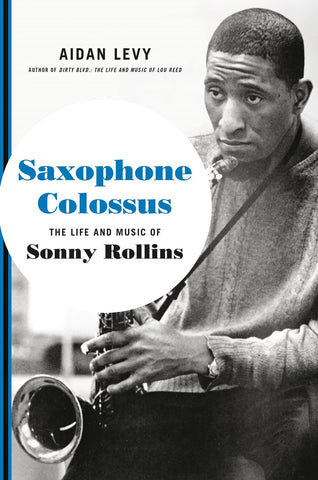The long-awaited first full biography of legendary jazz saxophonist and composer Sonny Rollins
Sonny Rollins has long been considered an enigma. Known as the “Saxophone Colossus,” he is widely acknowledged as one of the greatest jazz improvisers of all time, winning Grammys, the Austrian Cross of Honor, Sweden’s Polar Music Prize and a National Medal of Arts. A bridge from bebop to the avant-garde, he is a lasting link to the golden age of jazz, pictured in the iconic “Great Day in Harlem” portrait. His seven-decade career has been well documented, but the backstage life of the man once called “the only jazz recluse” has gone largely untold—until now.
Based on more than 200 interviews with Rollins himself, family members, friends, and collaborators, as well as Rollins’ extensive personal archive, Saxophone Colossus is the comprehensive portrait of this legendary saxophonist and composer, civil rights activist and environmentalist. A child of the Harlem Renaissance, Rollins’ precocious talent landed him on the bandstand and in the recording studio with Bud Powell, Thelonious Monk, Charlie Parker, Miles Davis and Dizzy Gillespie, or playing opposite Billie Holiday. An icon in his own right, he recorded Tenor Madness, featuring John Coltrane; Way Out West; Freedom Suite, the first civil rights-themed album of the hard bop era; A Night at the Village Vanguard; and the 1956 classic Saxophone Colossus.
Yet his meteoric rise to fame was not without its challenges. He served two sentences on Rikers Island and won his battle with heroin addiction. In 1959, Rollins took a two-year sabbatical from recording and performing, practicing up to 16 hours a day on the Williamsburg Bridge. In 1968, he left again to study at an ashram in India. He returned to performing from 1971 until his retirement in 2012.
The story of Sonny Rollins—innovative, unpredictable, larger than life—is the story of jazz itself, and Sonny’s own narrative is as timeless and timely as the art form he represents. Part jazz oral history told in the musicians’ own words, part chronicle of one man’s quest for social justice and spiritual enlightenment, this is the definitive biography of one of the most enduring and influential artists in jazz and American history.

